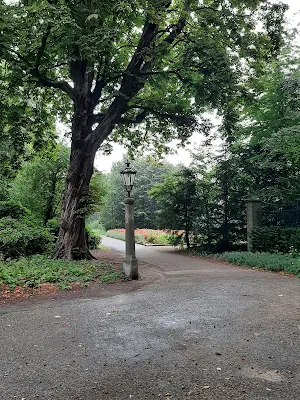A very royal destination: Palace Noordeinde in The Hague
In the heart of the city of The Hague, the Noordeinde Palace is located. Today it still is used by the Dutch Royal family as a an office for King Willem-Alexander and Queen Máxima.
On big events just as Prinjesdag - Prince's Day - , which takes place every third Tuesday in September, the Palace of Noordeinde is the decor of the depart of the royal family and the famous balcony scene. However what's the history of this beautiful place?
Some royal history
The Noordeinde palace originated as a medieval farmhouse, which was converted into a spacious residence by the steward of the States of Holland, Willem van de Goudt. From 1566 to 1591, the palace had a different owner. After that it was leased, and in 1595, purchased by the States of Holland for
Louise de Coligny, the widow of William of Orange, and her son Prince Frederik Hendrik. In recognition of William's service to the nation, the States presented the building to his family in 1609.
Louise de Coligny
Source picture: Wikipedia
Frederik Hendrik substantially enlarged the house, which was then known as the Oude Hof. He began by buying the surrounding plots of land. The architects Pieter Post and Jacob van Campen, who built Huis ten Bosch Palace in 1645, were among those involved in the alterations of 1640.
Source picture: Wikipedia
After Frederik Hendrik died in 1647, his widow, Amalia van Solms, spent much of her time at the Oude Hof. Following her death in 1675, the house was more or less empty for many years. After the death of the Stadholder-King William III in 1702, it passed to King Frederick I of Prussia, a grandson of Frederik Hendrik's.
Amalia van Solms
Source picture: Wikipedia
In 1740, Voltaire stayed in one of the apartments while he negotiated with Dutch publisher Jan van Duren about the Anti-Machiavel. In 1754, King Frederick the Great of Prussia sold his land-holdings
in the Netherlands to Stadholder William V.
Stadholder William V
Source picture: Wikipedia
The son of Stadholder William V, who would become King Willem I, took up residence at the Oude Hof in 1792. But when the French invaded the Netherlands in 1795, during the French Revolutionary Wars,
he and his family were forced to flee to England. The Oude Hof became the property of the Batavian Republic and hence state property, the status it has today.
he and his family were forced to flee to England. The Oude Hof became the property of the Batavian Republic and hence state property, the status it has today.
In 1813, after the fall of Napoleon, Prince Willem returned to the Netherlands, where he was proclaimed Sovereign Prince.
William I of The Netherlands
Source picture: Wikipedia
The Constitution of the time decreed that the State must provide a summer and a winter home for the sovereign. Initially there were plans to build a new winter residence, but in the end it was decided to make extensive alterations to the Oude Hof. The palace was extended in 1814 to the back, including the addition of the Ballroom.
King Willem I moved into Noordeinde Palace in 1817, living there until his abdication in 1840. His successor, King Willem II, never resided there. Like his grandfather, King Willem III used Noordeinde as his winter home, though he preferred to live at his summer residence, Het Loo Palace in Apeldoorn. In 1876, he had the royal stables built in the gardens behind Noordeinde Palace.
Even after King Willem III married Queen Emma, the royal family continued to use Noordeinde as their winter home. Their daughter, Princess Wilhelmina, was born there in 1880, and Queen Emma and her daughter spent their winters at Noordeinde after the King's death in 1890. In 1895, the Queen Regent had premises for the Royal Archives built in the grounds.
King Willem III of The Netherlands
source picture: Wikipedia
In 1901, Queen Emma moved to Lange Voorhout Palace, today's Escher Museum, while Queen Wilhelmina and her husband Prince Hendrik remained at Noordeinde.
Until the German invasion in 1940, Queen Wilhelmina continued to make frequent use of Noordeinde Palace. After the war, the palace was again used as the Queen's winter residence.
In 1948, the central section of the palace was destroyed by fire. That same year Juliana acceded to the throne. She preferred Soestdijk Palace as her official residence, though some members of the Royal Household continued to use offices in Noordeinde. Between 1952 and 1976 the Institute of Social Studies was based in the north wing of the palace.
Following a thorough restoration in 1984, the palace became the Dutch monarch's workplace and office for all political and state affairs.
Royal events
The palace has been the wedding location of several members of the Dutch Royal family, e.g., former Queen and her husband, Juliana and Prince Bernhard, and the youngest brother of the Dutch King and his wife, Prince Constantijn and Princess Laurentien. Furthermore, Queen Juliana (2004), Prince Hendrik (1934), Prince Claus (2002) and Prince Bernhard (2004) lay in state at the Noordeinde Palace
after their deaths.
after their deaths.
A visit
Unless you are invited by King Willem-Alexander to the Noordeinde Palace, this splendid royal destination is open for public (after buying a ticket) during a few weeks in July and August.
Royal The Hague
Other royal destinations in The Hague are inter alia:
- Prisoner's Gate, more on this link.
- Hofvijver, more on this link.
- Peace Palace, more on this link.
The pictures from Noordeinde Palace were taken in 2022 & 2024 and by Oscar Meijer.





_Rijksmuseum_SK-A-179.jpeg)


,_koning_der_Nederlanden,_Nicolaas_Pieneman,_1856,_Rijksmuseum.jpg)







Comments